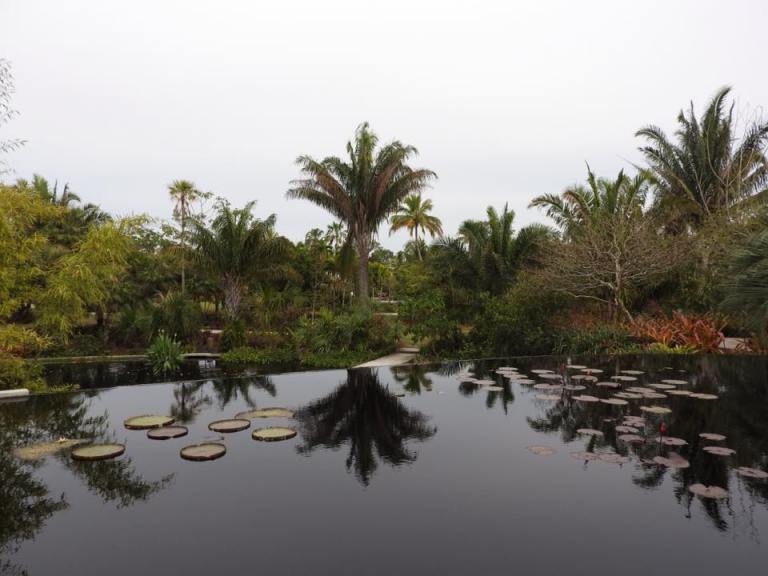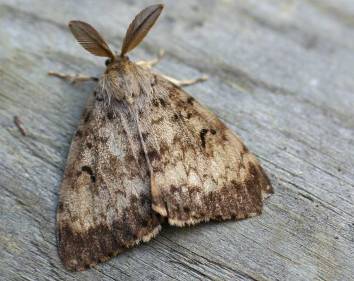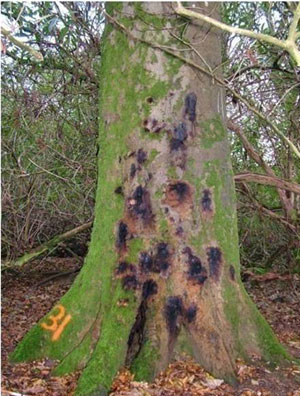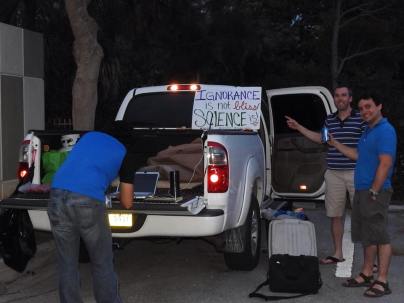Date: 3rd March 2016 Temperature: 29ºC Weather: Cloudy
Unfortunately, I did not get to participate in the activities on this day because I fell ill with a very bad stomach bug. However, that did not stop me from finding out about all of the fun things that the group did without me. This post is a recap of exciting tales from the other people on the trip.
Everglades Wetland Research Park
The first stop of the day was at the Everglades Wetland Research Park on the Florida Gulf Coast University (FGCU) campus to meet up with its founder and director Dr. William Mitsch (Bill). The facility was designed to provide research, teaching, and service related to wetland, coastal and river sciences as well as ecological engineering.
Presentation with Dr. Mitsch
While at the research park, the group received a talk from Bill Mitsch entitled “Carbon – What can wetlands do for us?”. The primary focus of the talk was that of climate change including effects such as rising sea water levels due to rising global surface water temperatures and glacial melting. Wetlands can be fantastic carbon sinks and long term carbon storage. However, wetlands can also produce methane which is a potent greenhouse gas. The methane production is due to the anaerobic conditions found in wetlands. Although wetlands can produce methane, it is believed that the amount produced in the long term does not outweigh the about of carbon captured. Wetlands are in fact better for carbon sequestration than rainforests.
As mangroves are of those wetlands good for carbon sequestration, their conservation is of the utmost importance. Of the 135,000 – 170,000 square kilometers of global mangrove forests, 5000 square kilometers are located in Florida. The mangrove forests are divided into four types, fringe, riverine, basin, and dwarf forests. Fringe forests grow in a thin fringe along the coast and are directly exposed to the tides and waves. Riverine forests grow along tidal creeks and rivers and are flooded by high tides and can experience large variations in salinity. Basin mangrove forests are in a partially impounded depression which flood frequently during the wet season and occasionally during the dry season. Finally, dwarf mangrove forests are much like fringe mangrove forests but appear in colder climates or in sediments with low nutrient content.
“Wetlands are better.” – Dr. William Mistch
Botanical Gardens
After their presentation with Dr. Mitsch, the group visited the Naples Botanical Garden. The Garden was founded in 1993 by a group of local plant enthusiast. However, it was not until 2000 when the 170 acres of land that make up the garden were purchased. In 2010 the various buildings were opened and now the Garden has over 220,000 visitors annually.

While at the Garden the group got to look at all of the various plants that are not only there for beauty and enjoyment, but also for conservation and research purposes. Also around the gardens were various statues made out of Lego including a sundial, butterfly and bald eagle.
Dr. David Lodge

After the botanical garden, Dr. David Lodge from the department of biological sciences at the University of Notre Dame gave a talk entitled “When nature bites back: Solving the budget busting invasive species epidemic”. Dr. Lodge discussed how the invasive species are impacting the American economy. He discussed the cost of the introduction of the Kudzu (Pueraria lobata) which is originally from Asia. It was originally introduced to control soil erosion, which it did well. Unfortunately the kudzu also ended up spreading everywhere.

Some of the other species he discussed were the gypsy moth (Lymantria dispar dispar) which is costing approximately $14 million a year, and Phytophthora ramorum a pathogen known to cause sudden oak death is costing $270 million every ten years. These costs are purely to control the problem and not eradicate them, as eradication would be next to impossible.
David also discussed how eDNA can be use to detect species presence in water, which is ideal for wetlands and detecting invasive fish. However, using eDNA is not as easily used on terrestrial invasive species, but can be used through testing skin and fun samples. David’s final message was that it is important to detect, prevent and control. Unfortunately eradication is unlikely for most, but it is ultimately cheaper to control the invasive species than to do nothing.
Tailgate Barbecue

At the end of the day, the group got to enjoy a barbecue on the FGCU campus with Wynn. The theme of the barbecue is “Inorance is not bliss, science is!”. As we are all a group of scientists, the tailgate party was the perfect way to end the day. From speaking to the others, it was one of the highlights of the day.
References
Florida Gulf Coast University 2016. Everglades Wetland Research Park. [Online]. Available at: http://www.fgcu.edu/swamp/index.html. Accessed: April 11 2016.
Marek, P. 2016. Mangroves : Mangrove Forests. [Online]. Available at: http://www.mangrove.at/mangrove_forests.html#fringe-mangrove-forests. Accessed: April 10 2016.
Naples Botanical Garden Date Unknown. Garden Mission. [Online]. Available at: https://www.naplesgarden.org/gardens/about-the-garden/. Accessed: April 11 2016.
Whittaker, S. 2016. Re: Dr. Bill Mitsch and Dr. David Lodge presentations. [Messenger communications]. Sent 30 March 2016. Accessed 11 April 2016.


